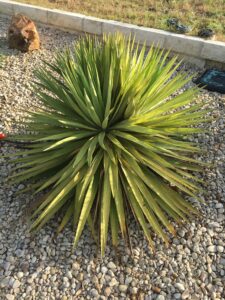 Are your Yucca plants looking tired?
Are your Yucca plants looking tired?
Are the leaves lighter in color than usual? If so, they might be infested with Yucca Plant Bugs. These relatives of Stink Bugs and Leaf-footed Bugs have piercing-sucking mouth parts. They feed on the plant by extracting juices from the leaves. The leaf will appear “stippled” with tiny light colored dots. You may see black specks on the leaves, which are the feces of the bug.
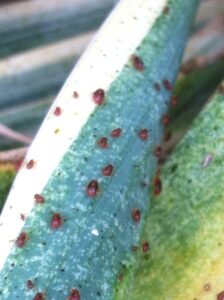
Yucca Plant Bugs overwinter as fertilized eggs that have been placed inside the leaf. The eggs hatch in the spring, and “nymphs”, which look very much like the adult bug, will cover the plant. Both nymphs and adults are oval-shaped with orange legs and orange-red heads and thorax. The nymphs have tiny black wings which do not cover their orange-red bodies. As adults, the black wings will cover their bodies and they will appear to have an orange-red head and black body.
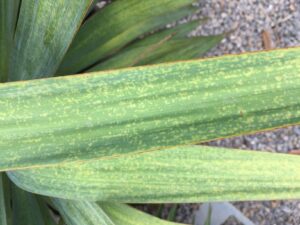
Since this bug can have up to three broods a year, it is wise to familiarize yourself with it and check your plants often for its presence. They can do a lot of irreversible damage in a short period of time. They have even been known to feed so heavily as to kill the plant.
Yucca Plant Bugs are quick to hide if they see you coming, so it is best to sneak up on them. They will retreat to the center of the plant, making them difficult to control with insecticides. Repeat applications may be necessary.
So, how can we control these pests?

The least toxic methods would be to spray with insecticidal soap, spinosad soap, or pyrethrin. Neem or horticultural oil may also be used, but do not use either of them when temperatures are over 90°F or they may damage the plant.
Don’t forget to sneak up on them so contact can be made.
Other chemical methods which have shown effective against the Yucca Plant Bug have the active ingredients carbaryl (Sevin), bifenthrin or cyfluthrin. Read the label for specific instructions.
If a systemic approach is desired, an imidacloprid drench has shown to have effectiveness, but should only be applied AFTER the bloom period so that the moth pollinator is not harmed.
As always, follow the directions on the label for the use rate and repeat application timing.
FOLLOW THE LABEL! It’s the LAW!


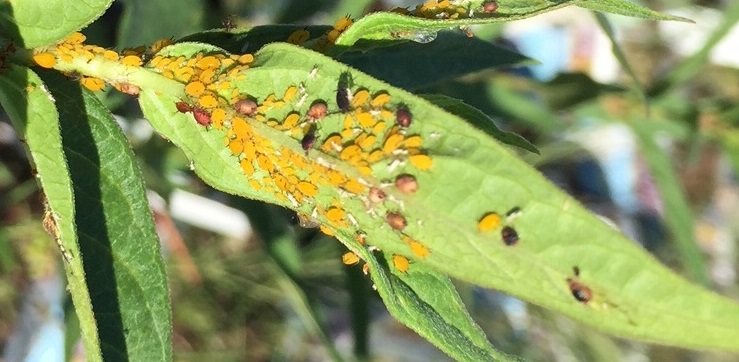
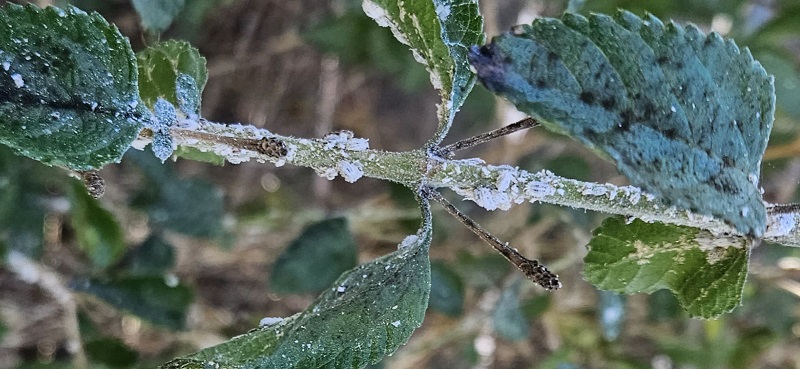

Leave A Comment